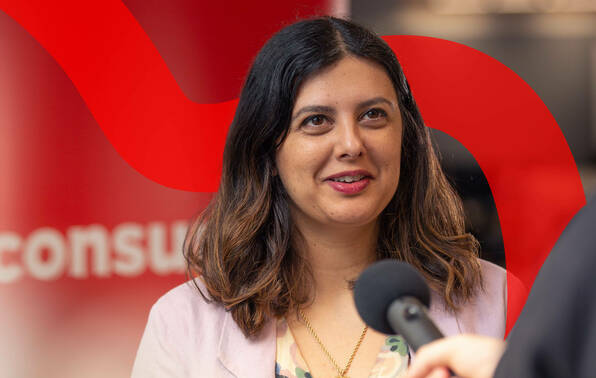
Environmental awareness quiz
Sort the green facts from fiction.

In these times of climate change we all want to be environmentally savvy. Put your eco-awareness to the test with our interactive quiz.
The questions
The answers
1. Per passenger, how much carbon dioxide and other greenhouse gas is emitted when flying Auckland to Heathrow, London return?
Answer: 7796kg CO2 equivalents
Based on the Enviro-Mark Solutions’ carbon footprint calculator, a return flight from Auckland to Heathrow adds 7796kg CO2 equivalents to your carbon footprint.
Aviation accounts for 2% of global emissions and this figure is on the up. According to a European Commission report, in 2020 emissions from flying will be around 70% higher than in 2005. By 2050, it’s estimated they could have grown between 300% and 700%.
Air New Zealand reported it emitted 3.6 million tonnes of greenhouse gases in 2018, 600,000 more than 2011. In that time, passenger numbers have increased from 13 million to nearly 17 million.
2. Over a year, which of the following has the largest impact on your personal carbon footprint?
Answer: Raising a child
Following Prince Harry and Meghan’s lead and capping the number of children you have is a sure fire way not to add to your carbon footprint. One child can potentially be responsible for an average of 58.6 tonnes of greenhouse gas emissions per year, according to a review published in the journal Environmental Research Letters.
The same review estimated ditching the car saves 2.4 tonnes every year while eating a plant-based diet saves 0.8 tonnes.
3. Which sector produces the highest proportion of greenhouse gas emissions in New Zealand?
Answer: Agriculture
The agriculture sector contributes the most to gross emissions, making up 48.1%, followed by energy and road transport (40.7%).
New Zealand’s greenhouse gas emissions have increased 23.1% since 1990. In that time, emissions from agriculture have risen 13.5% and road transport emissions have increased a whopping 93.4%.
4. How much of New Zealand’s electricity is generated from renewable resources?
Answer: 82%
Renewable resources – the sun, wind, water and geothermal energy generated in the ground – contribute 82% of our electricity supply, most of the remainder comes from gas, coal and oil.
While the government’s goal is 100% renewable electricity by 2035, a recent Interim Climate Change Committee (ICCC) report suggested 93% is more realistic with fossil fuels still needed during years of low rainfall, when there’s less water in our hydro lakes.
Only 5% of New Zealand’s greenhouse gas emissions come from generating electricity.
The ICCC report said greater carbon savings could be made by electrification of transport and process heat (heat used by manufacturing and industries, which is mainly coal- and gas-powered). These sectors account for 30% of New Zealand’s greenhouse gas emissions.
5. Which of these logos is from a recognised eco-labelling scheme?
Answer: Environmental Choice
Environmental Choice is a certification scheme that accredits products meeting its standards. The Environmental Choice logo is owned by the Ministry for the Environment.
The other logos have been made up by the companies using them.
6. Where does New Zealand rank among OECD countries in terms of greenhouse gas emissions per capita?
Answer: 5th highest emissions per capita
We’ve got the dubious distinction of ranking 5th. Why? Nearly half of our emissions come from agriculture, which produces a lot of methane and nitrous oxide. Since 1994, our dairy cattle numbers have increased 70%.
7. Which of the following product claims can you trust to benefit the environment?
Answer: None of the above
They’re all meaningless!
Most items biodegrade eventually: a biodegradable claim isn’t really useful unless the product’s been independently tested against a recognised biodegradability standard.
“Natural” is straight out the marketer’s playbook. The same goes for “environmentally friendly”.
As for “recycling”, products may be recyclable in theory but not in practice. Take plastic: a lack of recycling facilities means a lot of it may end up in the dump or being stockpiled until it can processed.
8. How many single-use plastic bags were distributed in New Zealand in 2018?
Answer: 750 million
We went through 750 million single-use plastic bags in 2018, according to the Ministry for the Environment.
While the bags are a small proportion of total waste by volume, the bigger problem is that they contribute to microplastic pollution. These tiny fragments have been found on the coastline of Auckland, Wellington and Christchurch.
9. On average, each Kiwi household wastes how much money every year from throwing out food?
Answer: $563
A 2015 food waste survey, commissioned by Waste Management Institute New Zealand, found 30% of household rubbish collected from the kerb each week as food waste. Of that, more than half was avoidable, meaning it was food that had gone off before it could be eaten. This waste equates to $10.83 per household each week, or $563 a year.
Most of what we throw out is vegetables, fruit, meat, fish and bakery items. For options to reduce your food waste, we’ve trialled five compost systems.
10. How much e-waste is produced in New Zealand each year?
Answer: 95,000 tonnes
Old phones, fried fridges and tossed TVs are just some of the estimated 95,000 tonnes of e-waste we throw out every year.
The government has proposed a product stewardship scheme for e-waste, which would see manufacturers and retailers take more responsibility for products once they’ve done their dash. However, it could take up two years to get the ball rolling.

We can't do this without you.
Consumer NZ is independent and not-for-profit. We depend on the generous support of our members and donors to keep us fighting for a better deal for all New Zealanders. Donate today to support our work.
Member comments
Get access to comment